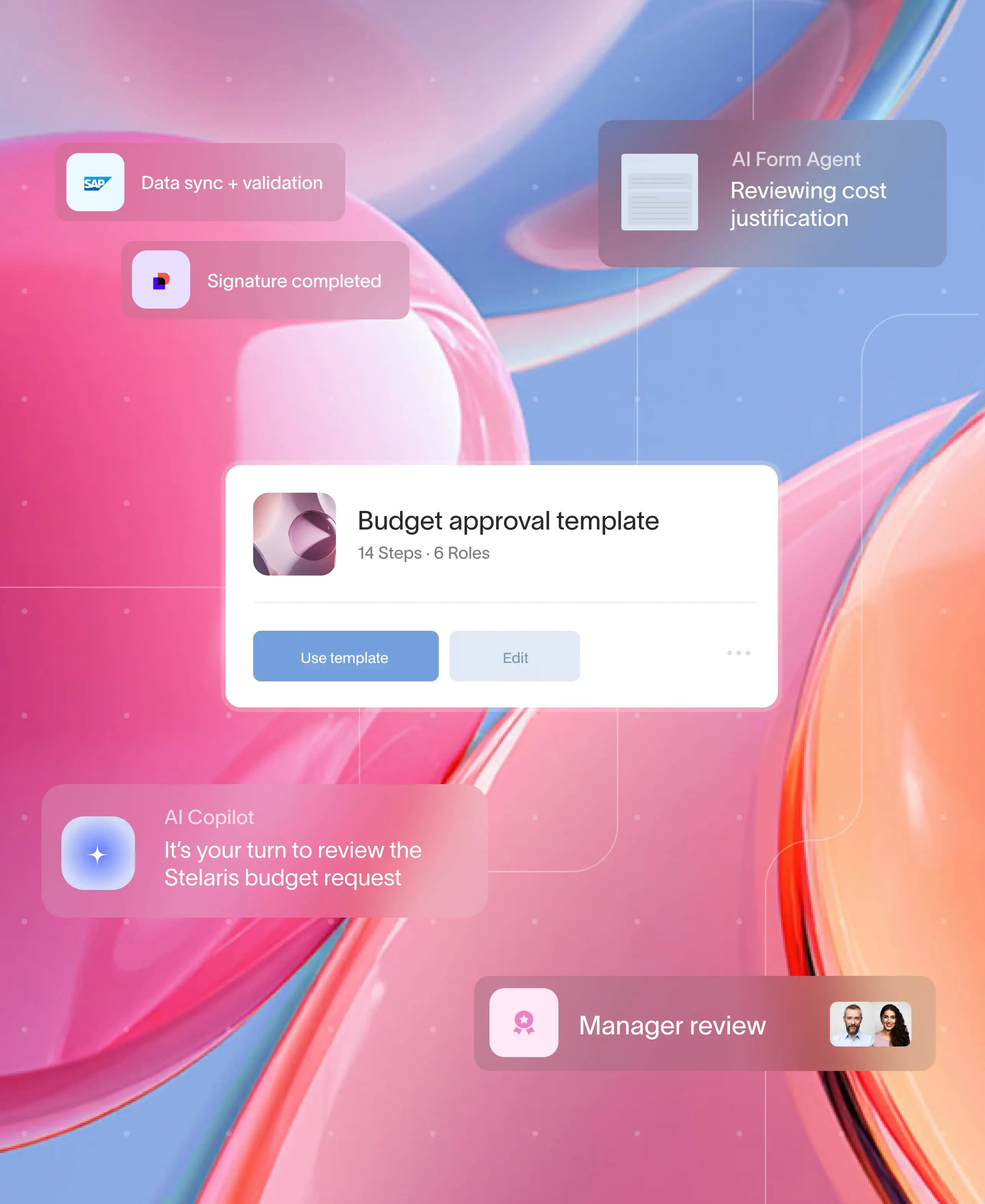.png)
Achieving operational excellence is no longer optional but essential. Businesses striving for operational excellence consistently outperform their competitors by delivering higher value, improving efficiency, and ensuring superior customer experiences.
According to a PwC study, a century-old healthcare provider achieved a 60% reduction in compliance costs and a 36% decrease in manual control execution time by integrating automated controls into Workday. This transformation streamlined financial and supply chain operations, enhanced risk management, and improved data-driven decision-making, allowing the organization to focus more on patient care.
Whether you're a small business owner or part of a large enterprise, understanding how to achieve operational excellence streamlines operations, enhances customer satisfaction, and boosts profitability. In this guide, we'll break down the key strategies, principles, and steps to achieve it.
What is operational excellence
Operational excellence refers to the continuous pursuit of improving business processes to enhance performance, efficiency, and customer satisfaction. Operational excellence is about creating a culture of continuous improvement and aligning all departments toward common business goals.
At its core, achieving operational excellence means delivering consistent value to customers through reliable processes, quality products, and exceptional service. It involves optimizing resources, reducing waste, and fostering a culture of accountability and innovation.
Breaking through business limitations: How operational excellence fuels growth
Operational excellence is a fundamental driver of business and customer success. Here’s why it matters:
- Increases efficiency and productivity: By streamlining processes, businesses can reduce redundancies, eliminate waste, and improve productivity. This leads to faster project completion, lower costs, and better resource utilization.
- Enhances customer satisfaction: A business that prioritizes achieving operational excellence consistently delivers high-quality products and services, which boosts customer loyalty and satisfaction. Satisfied customers lead to repeat business and positive word-of-mouth referrals.
- Improves employee morale: Clear processes and efficient operations create a positive work environment. Employees feel empowered when they have access to streamlined workflows and transparent performance metrics.
- Boosts profitability: Achieving operational excellence reduces operational costs while improving output quality. This directly impacts profitability by driving revenue growth and reducing wasteful spending.
Embracing operational excellence empowers businesses to overcome limitations, drive sustainable growth, and achieve lasting competitive advantage.
10 cornerstones to achieve operational excellence: Blueprint for brilliance
Achieving operational excellence is a continuous journey. By mastering these 10 cornerstones, businesses can streamline operations, boost efficiency, and drive sustainable growth.
1. Define clear objectives and KPIs
Start by defining clear business goals and key performance indicators (KPIs). Identify what operational excellence means for your organization. It can reduce lead times, improve quality, or boost customer retention. Use metrics like cycle time, customer satisfaction scores, and defect rates to measure progress.
Read More: How to measure operational excellence?
2. Streamline processes through lean methodology
Lean methodology focuses on eliminating waste and maximizing value. Use techniques like:
- Value stream mapping to identify inefficiencies in workflows.
- 5S system to organize and standardize workspaces for efficiency.
- Just-in-time (JIT) to minimize inventory waste by receiving supplies only when needed.
3. Leverage automation and technology
Investing in automation tools and technology can significantly improve operational efficiency.
- Use CRM software to streamline customer interactions.
- Implement workflow automation to reduce manual errors.
- Leverage AI-powered analytics for data-driven decision-making.
4. Enhance communication and collaboration
Effective communication is the key to achieving operational excellence. Use client collaboration tools like Moxo to improve real-time communication. Promote cross-functional collaboration to break down silos and boost efficiency.
5. Optimize resource management
Ensure that you allocate resources effectively by monitoring employee workloads, minimizing idle time, and avoiding resource bottlenecks. Use resource planning software to manage schedules, track capacity, and optimize workforce productivity.
6. Implement quality control measures
Maintaining high-quality standards is critical for achieving operational excellence.
- Introduce regular quality audits.
- Use Six Sigma methodologies to identify and eliminate defects.
- Encourage employee feedback to catch quality issues early.
7. Adopt agile and lean practices
Agile methodologies enhance flexibility and adaptability by encouraging iterative improvements. Use Scrum or Kanban boards to visualize and manage workflows. Encourage daily stand-ups to identify and resolve issues quickly.
8. Prioritize employee training and development
Operational excellence requires a skilled and motivated workforce. Provide continuous training programs on process improvement techniques. Encourage employees to get certification in Lean, Six Sigma, or project management.
9. Embrace digital transformation
Incorporating digital transformation into operations boosts efficiency.
- Use cloud-based platforms for data accessibility.
- Implement AI-driven analytics for predictive insights and faster decision-making.
10. Create a culture of accountability
For operational excellence to succeed, employees must be accountable for outcomes.
- Set clear performance expectations.
- Conduct regular performance reviews.
- Recognize and reward employees who contribute to continuous improvement.
Operational excellence is the key to long-term success. By embedding these principles into your business DNA, you can foster agility, enhance customer satisfaction, and stay ahead of the competition.
Businesses that achieved operational excellence with Moxo
Peninsula Visa slashed document processing time by 50% with Moxo
Peninsula Visa achieved significant operational excellence by strategically implementing Moxo, transforming a once-chaotic workflow into a streamlined model of efficiency. With Moxo Flow, document processing times were reduced by an impressive 50%, turning multi-day tasks into mere hours. Client documents could be received and prepared for submission within just a couple of hours.
By eliminating cumbersome email chains, agents handled higher client volume without compromising service quality. Moxo's Flow Branching and Milestones features further enhanced the client experience by enabling a streamlined, self-guided journey, minimizing direct agent involvement, and boosting customer satisfaction.
65% of Standard Chartered’s transaction approvals are done with Moxo
Standard Chartered achieved a notable leap in operational excellence by strategically integrating Moxo into its "myRM" digital hub, effectively bridging the gap between traditional high-touch client service and the demands of an increasingly digital world. This integration wasn't merely a technological upgrade; it represented a fundamental shift in how the bank delivered personalized service, ensuring that clients experienced the same level of care online as they were accustomed to in physical branches.
A key metric illustrating this transformation is the fact that a significant 65% of all transaction approvals are now conducted directly within the "myRM" platform, showcasing the platform's widespread adoption and effectiveness. This digital transformation, deployed across six live markets and serving over one million clients, empowered private bankers to respond to client needs with unprecedented speed and efficiency.
Veon Szu Law increased its process efficiency by 80%
Veon Szu Law enhanced its operational efficiency by integrating Moxo into its legal practice. By digitizing its workflows, the firm achieved an 80% improvement in collaboration, enabling team members to communicate and collaborate seamlessly on legal processes such as drafting letters, reviewing contracts, and managing client documentation. The platform’s secure document sharing, e-signatures, and real-time messaging eliminated the need for cumbersome paperwork, accelerating task completion and reducing administrative bottlenecks.
On the client side, Veon Szu Law experienced a 50% improvement in client workflows, thanks to Moxo's intuitive, all-in-one platform. Clients could review, sign, and share legal documents without switching between multiple applications, streamlining the entire legal service process. This convenience boosted client satisfaction and increased the firm’s service capacity.
Experience the same operational efficiency and process improvement that others are enjoying. Get started with Moxo today and take the first step toward transforming your business workflows.
Conclusion
Achieving operational excellence is a continuous journey that requires a strategic blend of streamlined processes, technology adoption, and a culture of continuous improvement. By clearly defining objectives, embracing lean methodologies, and leveraging automation, businesses can enhance efficiency, reduce costs, and deliver superior customer experiences.
Real-world examples from industry leaders highlight the transformative power of operational excellence in boosting productivity and driving growth. By fostering collaboration, empowering employees, and making data-driven decisions, organizations can stay agile, competitive, and resilient in today’s dynamic market landscape.
Operational excellence is the foundation for long-term success and sustainable business growth. With a unified platform for workflow automation and seamless collaboration, Moxo helps organizations streamline processes, enhance visibility, and deliver exceptional stakeholder experiences – all while staying agile and efficient. Get started now!
FAQs
How long does it take to achieve operational excellence?
Achieving operational excellence is an ongoing process rather than a one-time goal. While initial improvements can be seen in months, achieving a fully optimized and continuously improving organization can take years. The key is to remain committed to continuous refinement.
What are the common challenges in achieving operational excellence?
Some common challenges in achieving operational excellence include resistance to change, lack of clear goals, inconsistent execution, and insufficient technology adoption.
What is the difference between operational efficiency and operational excellence?
Operational efficiency focuses on optimizing existing processes to reduce waste and costs.
Operational excellence is a broader strategy that encompasses efficiency, innovation, and a continuous improvement mindset to achieve long-term, sustainable success.





